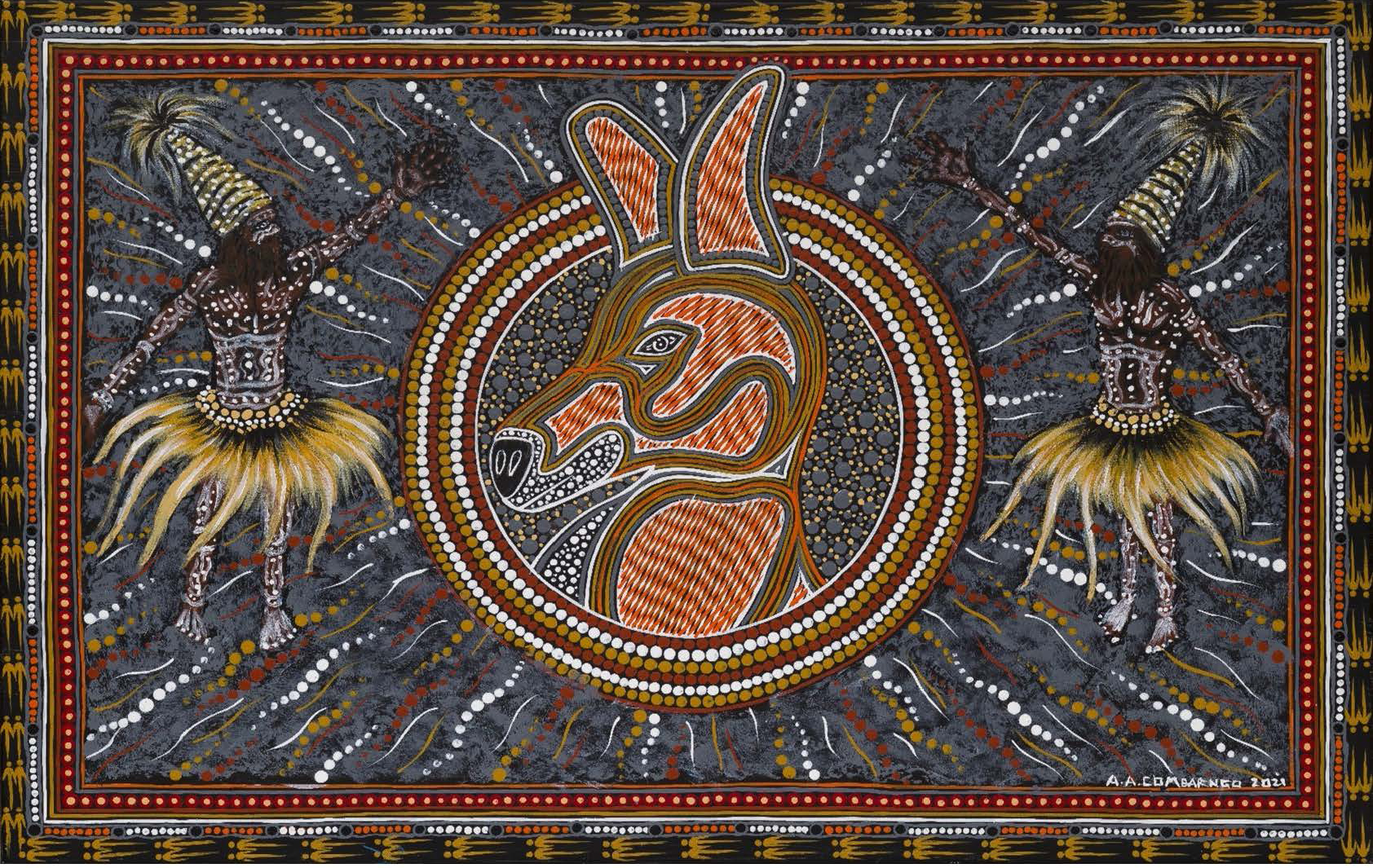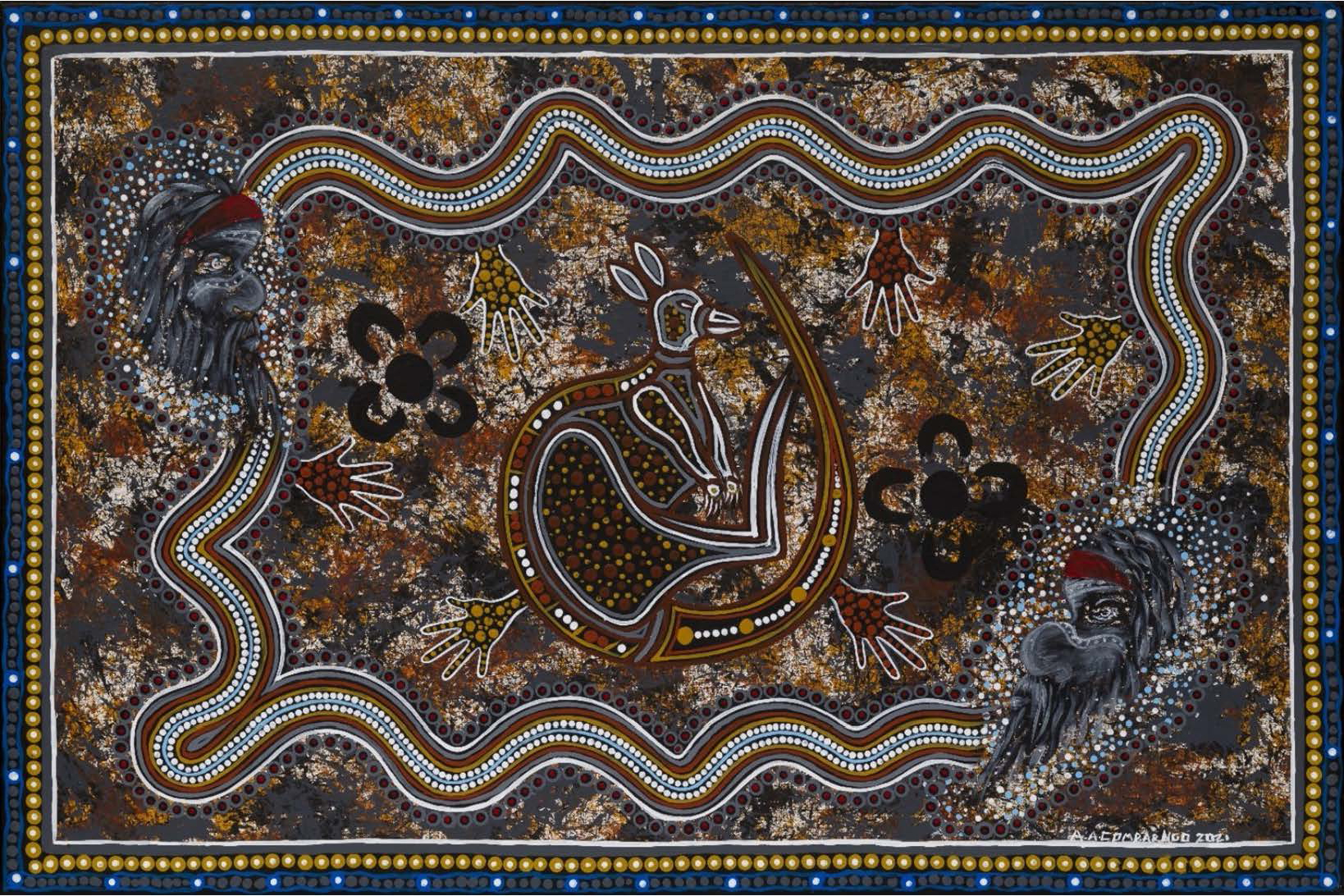First Nations people and kangaroos
Australia’s First Nations peoples have a long and complex relationship with Country that encompasses the physical and spiritual aspects of the environment. This relationship extends to the animals that people share Country with. A relationship dating back thousands of generations and one which continues today.
Kangaroos or macropods are a particularly important group of animals as they include the largest native terrestrial species found in Australia.
Macropod meat is a valuable source of protein, and one kangaroo can feed several families. Skins of kangaroos, wallaroos and the large wallaby species can be made into cloaks big enough even for adults to wear. The bones and teeth of large macropods can be made into a variety of tools, whilst the long and extremely strong sinews of a macropod’s tail can be used as a binding equally as strong as any synthetic material available today.
First Nations peoples may have a macropod species as their totem – they are an important part of cultural identity. The relationship a First Nations person has with their totem animal is very different to other animals, even those that may seem very similar.
Below are three works of art by Adrian Combarngo representing the three species of macropods that can be sustainably used in Queensland.
Adrian is a descendant of King Jimmy of the Mandandanji Nation (the fishing net people), whose Country covers some 40 000km2 in the Maranoa area centred around the town of Surat in Queensland.
A self-taught artist who has been painting since he was 13 years old, Adrian’s paintings speak of the Dreamtime and how his ancestors lived, based on stories he has collected during his journey of self-discovery. An avid reader of his people’s history Adrian’s art shares the hidden history of Aboriginal people for current and future generations. When not painting Adrian works for Warroo Game Meats in Surat processing kangaroo meat for human consumption.
The Red Kangaroo

The red kangaroo is Adrian’s totem which means this species is a relative of his people both past and present. The painting show’s ancestors telling the sacred story of the red kangaroo through song and dance as they have done for thousands of generations. Whilst Adrian works with red kangaroos at Warroo Game Meats he would not eat or harm a living red kangaroo.
The Eastern Grey Kangaroo

Adrian’s people hunted the eastern grey kangaroo using extensive knowledge of their country. The painting shows billabongs and rock pools joined by creeks and rivers. The kangaroo in this painting is in the open grasslands which were created through burning practices carried out over thousands of years. Hunting took great skill and was an important part of men’s initiation. Hunters needed to bring down the kangaroo quickly for a wounded animal meant many hours of tracking and carrying the animal back to camp.
The Common Wallaroo

A species living in the hill country to the east and north of the Mandandanji lands. Adrian’s ancestors would have hunted common wallaroo when travelling to major gatherings in the Bunyas or Carnarvon ranges. The painting shows the wallaroo in the ridges with hand prints that were painted by Mandandanji hunters in the Canarvon Gorge. Large corroborees were held by men to tell of hunting expeditions. The very last Mandandanji corrobboree was held near Surat.


